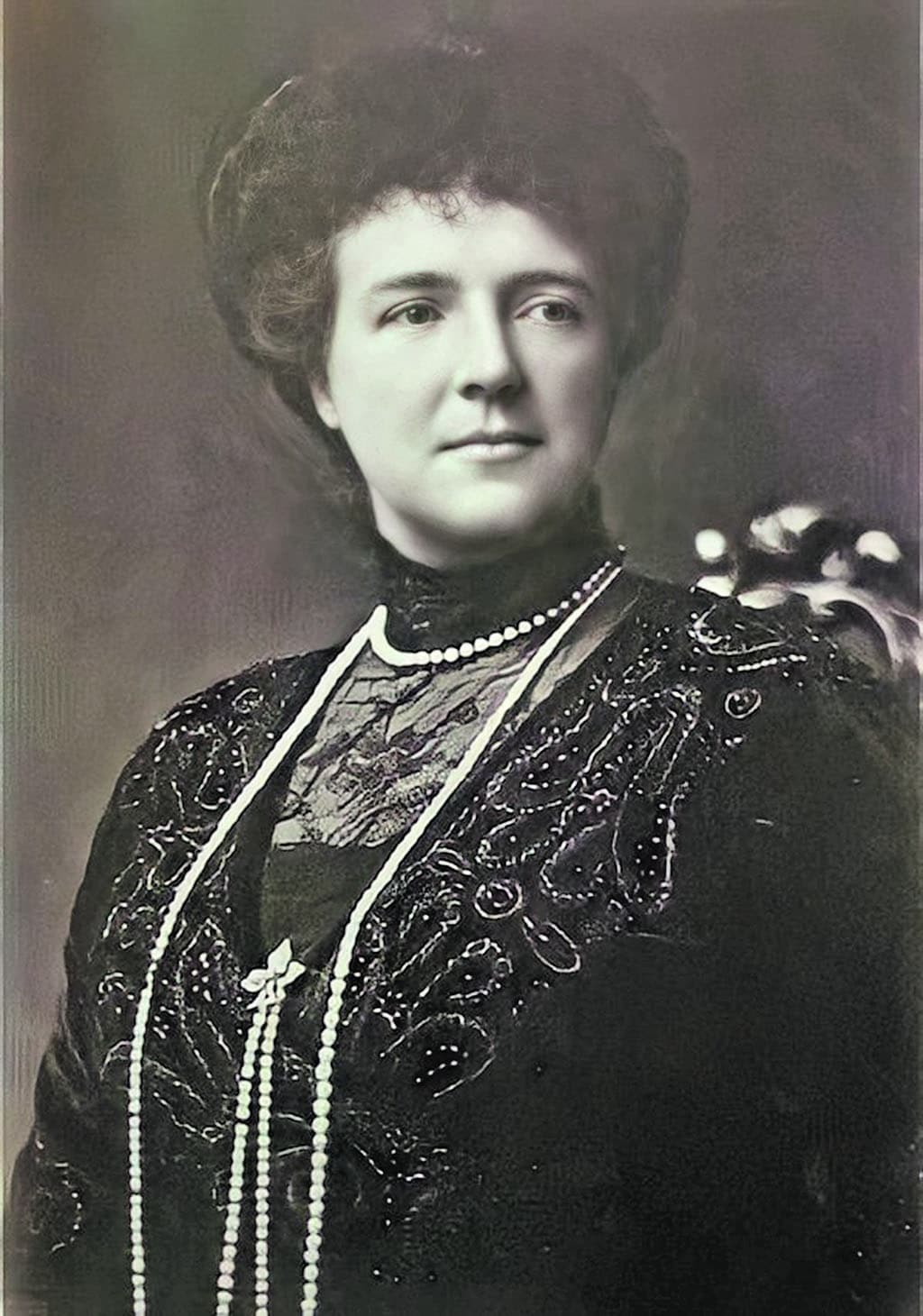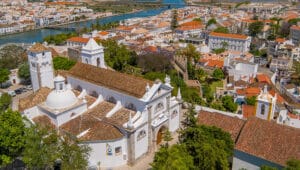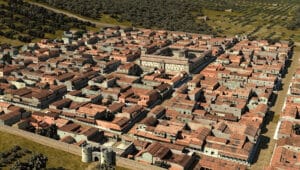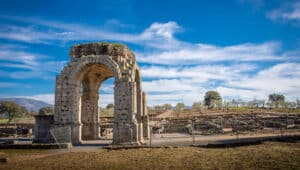Over its eight centuries of monarchy, Portugal enjoyed the services of four French royal consorts, the last of whom was Amélia de Orleães. Her experience was perhaps the unhappiest of the four.
Early life and wedding
After the revolution of 1848, many French royalists fled to England. Some, such as Prince Philippe, Count of Paris, the Orléanist pretender to the throne of France, chose to live in Twickenham, where his daughter Amélia was born at York House in 1865. His family was able to return to France only in 1871, after the downfall of the Napoleon III’s Second Empire. The prince was exiled again in 1886, and eventually lived and died at the majestic Stowe House, now a property of the National Trust.
Amélia and her future husband, the Infante D Carlos of Bragança, met for the first time in 1886, and married on May 22 in the same year when she was 21 and he 23. The queen of Portugal at the time, D Maria Pia, had expected her son to marry into the one of the reigning royal houses of Austria, Saxony, Prussia or Britain. The daughter of the deposed French royal house had scarcely entered her reckoning, and the relationship between the reigning queen and daughter-in-law never warmed.
Only three years after their wedding, in October 1889, King D Luís died of syphilis at the early age of 51, and Amélia suddenly found herself catapulted into her main role of queen consort. Much taller than her husband (her height 1,82m; his height 1,76m), she was an imposing figure, and although proudly graceful and with a radiant complexion, she tended to talk down to people, where her husband avoided social contact where possible. She was both cultured and religious, and the leading liberal politicians distrusted her because of her closeness to the Jesuits.
Married life and public works
Against the advice of her mother-in-law, Amélia believed that it was incumbent on the royal family conspicuously to demonstrate its wealth, not realising that the country was bankrupt, and that her new family was financed by an increasingly unpopular civil list, together with secret subsidies from the state budget, known as ‘adiantamentos’. The king recognised his weak position – he declared that Portugal was a monarchy, but with no monarchists, and that the Braganças were the poorest royals in Europe.
The two surviving children of the royal couple were Infante Luís Filipe, Duke of Bragança (1887-1908), and Infante Manuel (1889-1932), and it was the queen who oversaw their education. Neither was seen as a good parent – D Carlos because he was never there, and D Amélia because she was too close to the clergy. Rumours of the king’s infidelities began to circulate, and the couple became more distant, even on important occasions. During the visit of Britain’s Edward VII to Portugal in 1903 – arguably the most significant royal visit of the reign – she chose to take her two boys on holiday to northern Africa.
Royal lifestyle was focussed on association with around 200 wealthy families. For example, each year Portuguese society spent its summers at Sintra and Cascais with the royals. These were long holidays – at Sintra, three months of garden parties and picnics, followed by more parties at Cascais at the end of September. They promenaded either on foot, on horseback or in carriages. The king shot pigeons, played tennis and in the evening played bridge. His sports were tennis, shooting, riding, fencing, swimming, cycling, driving, sailing and billiards. Other hobbies included painting, oceanography, stock-farming and even sculpture, ceramics, photography and ornithology. To be a part of the royal set, one had to do the same.
The formerly slim and handsome D Carlos rapidly grew fat as he conducted a string of more or less public extramarital affairs. While her husband enjoyed his various hobbies and mistresses, Amélia devoted her time to her two sons and to social work. She organised and founded dispensaries, popular dairies, public lavatories and economic kitchens for the poor. In 1892, she founded the Instituto de Socorros a Náufragos (for aid to shipwrecked sailors); in 1899, the Instituto de Assistência Nacional aos Tuberculosos; and in 1905, she founded the famous Coach Museum in Belém. These important foundations served to reduce her unpopularity.
The Regicide
Lisbon had become a revolutionary hotbed, but advised by Prime Minister João Franco that the city was safe, the family returned to Lisbon from Vila Viçosa on February 1, 1908. Their train reached the terminus at Barreiro, and the family boarded the river ferry for the short journey to Lisbon. Arriving at the river port, D Carlos, D Amélia and the two princes boarded an open landau for the short trip to the Necessidades Palace. Waiting on the corner of the Rua do Arsenal were two assassins, who shot dead the king, and mortally wounded Crown Prince Luís Filipe. Queen Amélia showed real courage in the face of this attack and shouted and beat at the attackers with her bunch of flowers.
Outraged and depressed at this disaster, the queen withdrew to the Pena Palace at Sintra. The only possible outcome of these assassinations was that the young D Manuel succeeded his father as king, with his mother as a constant adviser. The country was in tumult, and the revolution which deposed D Manuel broke out on October 5, 1910. The royal family fled from Lisbon, and having spent the night at Mafra, boarded the royal yacht at Ericeira on the following day. In exile, the family settled in Twickenham, strangely enough Amélia’s birthplace. After the marriage of D Manuel in 1913, Queen Amélia moved from Twickenham to Chesnay, near Versailles.
Later life and death
Her last visit to Portugal was in May and June 1945, when after the end of the war, Salazar invited her to tea at the Palacete de São Bento, his residence in Lisbon. He invited to the same occasion many of the ladies who had graced the royal court 35 years before. His current romantic interest, Carolina Asseca, acted as hostess.
Amélia described Salazar as austere and rigid, and with a hooked nose. The religious Amélia also took the opportunity to make a pilgrimage to Fátima, and to revisit the Pena Palace. She said of this visit, “I come to Portugal in search of reconciliation with a country which took from me more than it gave me.”
Maria Amélia died in France on October 25,1951, at Chesnay, and her remains were reunited with those of her family in the Bragança Pantheon at São Vicente de Fora in Lisbon.
Throughout her life, Amélia was a square peg in a round hole: her own family had been exiled by the French government; for a number of reasons, she clearly did not get along with her mother-in-law; she dwarfed her husband, and in their photographs together, she is nearly always seated; her husband found other love interests and her religious views were unpopular with the governing class in Lisbon.
Then she suffered the unhappy fate of surviving the assassination of her husband and elder son, and the early and unexpected death of her younger son. She lived a sad life, and clearly felt that her love for Portugal had not been requited.
By Peter Booker
|| features@portugalresident.com
Peter Booker co-founded with his wife Lynne the Algarve History Association.
www.algarvehistoryassociation.com

























